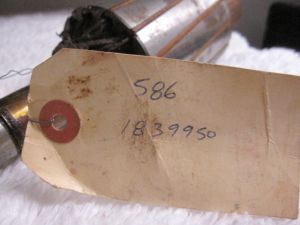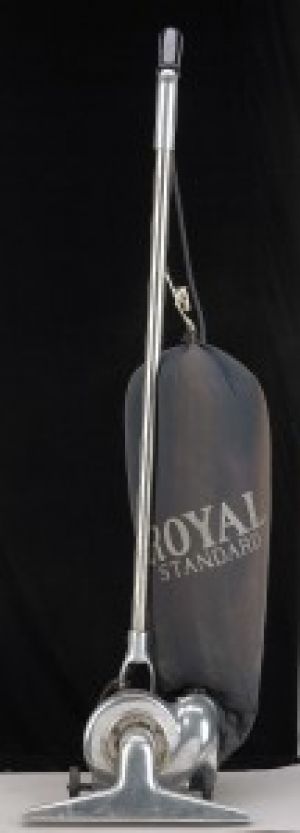- Home
- About Us
- Join/Renew
- Member Benefits
- Member Pages
- Log In
- Help
- Museum Store
Just options, as mentioned, open car hardware is hard to come by….hope you find some originals!!!
Well, back to your “leather and topping” discussion.
Body and interior colors will determine what color top you put on car. I believe the only factory choices for top were black or tan, if anyone knows differently advise. Haartz/Stayfast is the best wearing material and good to work with. Make sure your trimmer uses good padding material for the top pads, NOT a thin foam, or your top will end up looking like a starved horse. The top on these phaetons has a very nice curve to the rear curtain, be sure to study pictures of cars and see how this was done. The front edge of the rear curtain (right beside the backrest of rear seat) should have a pocket, into which the rear side curtain slides. If you need pictures of any of this, let me know.
Make sure you choose a high quality vat-dyed automotive leather. Leather is a science all to itself, and some furniture leathers will not hold up in a car. There’s another creature out there now, called “bonded leather”, which is leather scraps ground up and glued back together. The name sounds great, the material isn’t suitable for anything with four wheels.
I realize that color is a personal choice, but remember that Pierce usually was a conservative company. It’s so easy to be tempted by bright flashy colors and contrasts and all those chrome accessories, and thus detracting from the basic beauty of the car…
Yes, it was a 32 club brougham….I was looking at buying or trading for it, but heard through the grapevine that the engine had some developmental challenges so ended up passing also.
I don’t trust old babbitt, particularly on rods as they take a beating. The mains on a 9 main bearing engine are much longer lasting.
Anyone working with old engines is also aware of the high price of tin, which in turn makes Babbitt metal very expensive. How many of you have converted rods to inserts? I’m a fan of that……
They may not be exact to the Pierce design, but maybe could be modified, from the following suppliers, :
Antique Auto Top Hardware Company, Kim Dawson, 503-8245888 http://www.AntiqueAutoTopHardware.com (has a bronze casting blank, can be modified and threaded to fit) Oregon
Restoration Supply Company, http://www.RestorationStuff.com , 800-3067008 (has a couple different wingnuts that you might add a bolt to and modify) California
Your restorer should be familiar (if he’s not) with Restoration Supply as they have lots of interesting, hard to find stuff…also, McMaster Carr is a gold mine of hardware if you look, and once you set up an account, you order one day and it’s in your hands the next.
I believe the hooks that you mention are to lock the top in a down position when irons are folded. If you look, you’ll see a corresponding slot on another adjacent iron.
That’s what’s on my ’31 top, and can’t imagine it’d be different….
As for the babbitt replacement, I agree. Some materials hold up better, the bearings in my 1910 Hupmobile are Parson’s Bronze, and they seem to hold up well.
Sounds like Y n Z has done such a harness before, experience counts, I’d go that route if I were doing one then…
Narragansett does a good job, I bought from them for my ’37 Cord, just be sure you get the correct pricing from them, the website isn’t always updated.
I believe this was discussed before, your car may have metal junction boxes into which wiring goes, and flexible conduit in which the wiring runs….some of which you’ll have to fabricate if you don’t already have on the car…
So I guess the big copper pipe that makes up the exhaust system on my ’31 phaeton isn’t original?
The fellow who owned it for years tore down an old boiler room in the ’60’s, and when he saw the thick walled copper pipe, just knew it was perfect for a “forever”” exhaust system……seems to work fine!!”
Fantastic car, envious doesn’t even start the description! Great purchase….
My personal opinion is, on a Pierce, less is better. I bought a stone guard for my ’31 phaeton, propped it up in front of the radiator, took one look, and promptly sold it to someone else.
Another theory is that they helped cool the brake drum…which almost makes sense..it would be interesting to find a definitive answer, but all I’ve found so far is conjecture….there are all sorts of springs and straps sold to silence and prevent vibration when turning a drum, as mentioned….
A Pierce Brake drum, stood on “pointy” end and struck with wrench, makes a lovely sound.
McMaster Carr can fabricate custom extension springs any length, different materials and wire thickness. It would be interesting to see what one would cost, if you have a sample spring would be simple enough to measure length and size of wire…..and get a quote..
Here are some numbers….

Careful, your Freudian slip might be showing in that picture! “Nice original body” comments to come, I’m sure…..
Personally I think you’re correct, Philomena, to NOT put them on the car. The less distractions the better, and let the Pierce class show through!
Not meant as criticism, just an observation, figured you were taking everything apart eventually! And, get some epoxy primer on that frame quickly, once blasted the surface is very prone to quickly rusting! Good progress, and as you say, now comes the fun part!!
Making quick progress! I’m sure you’re going to do this anyway, but each piece of the suspension is going to need to be taken apart, cleaned, and rebuilt as needed. Usually a frame is sand blasted by itself, and the individual components cleaned or blasted (after disassembly) apart from frame. The sand, or whatever media you used, gets everywhere inside what you think is a “sealed” component. The only case this isn’t true is with soda or CO2 blasting. That engine assembly weighs over 1000 pounds, so yes, quite a load! Thanks for keeping us informed of progress, interesting stuff! Did you ever find your Pierce restoration “consultant”?
Thanks! Yes, there are even vacuum cleaner collections out there. Because of the discharge on the left side as seen from front, the Pierce cleaner shown dates from 1928 (when they switched sides) to 1938 (for obvious Pierce reasons!)
It’s an upright Royal vacuum cleaner with a Pierce bag. This particular model had two methods of use for the front, one a rectangular standard “pickup” nozzle (see attached photo of a 1914 Royal), the other, attach a hose. I’m missing the pickup unit. I’ve never run it due to wiring. Thus, it wasn’t a “Pierce” vacuum cleaner, but rather a standard unit that had an embroidered bag (professionally done) attached. One would think that these are out there for other makes, also, though I’ve never seen another.

You, sir….with all due respect. And surely some is due….
I believe it was Ed who told me that there were trade catalogs, and a factory or dealer could order all manner of tools and accessories, and have them “personalized” with the make of the car being sold. I’d love to think this came out of the Pierce factory, when in fact it probably was just what Mr. Minnie says, an aftermarket order…don’t know how they handled the trademark question. I still think it’s neat, if anyone knows any more history on such marked accessories please feel free to add that knowledge!!
